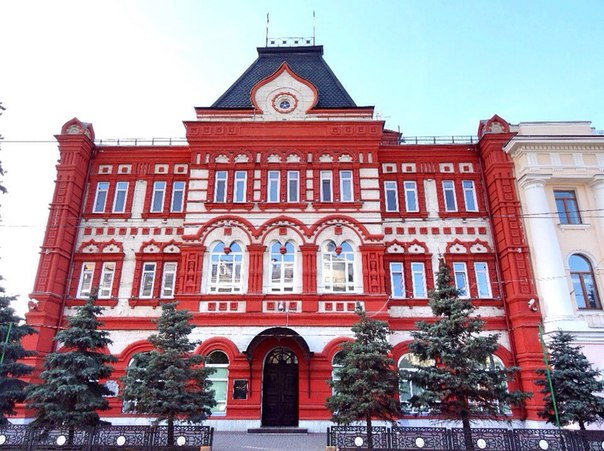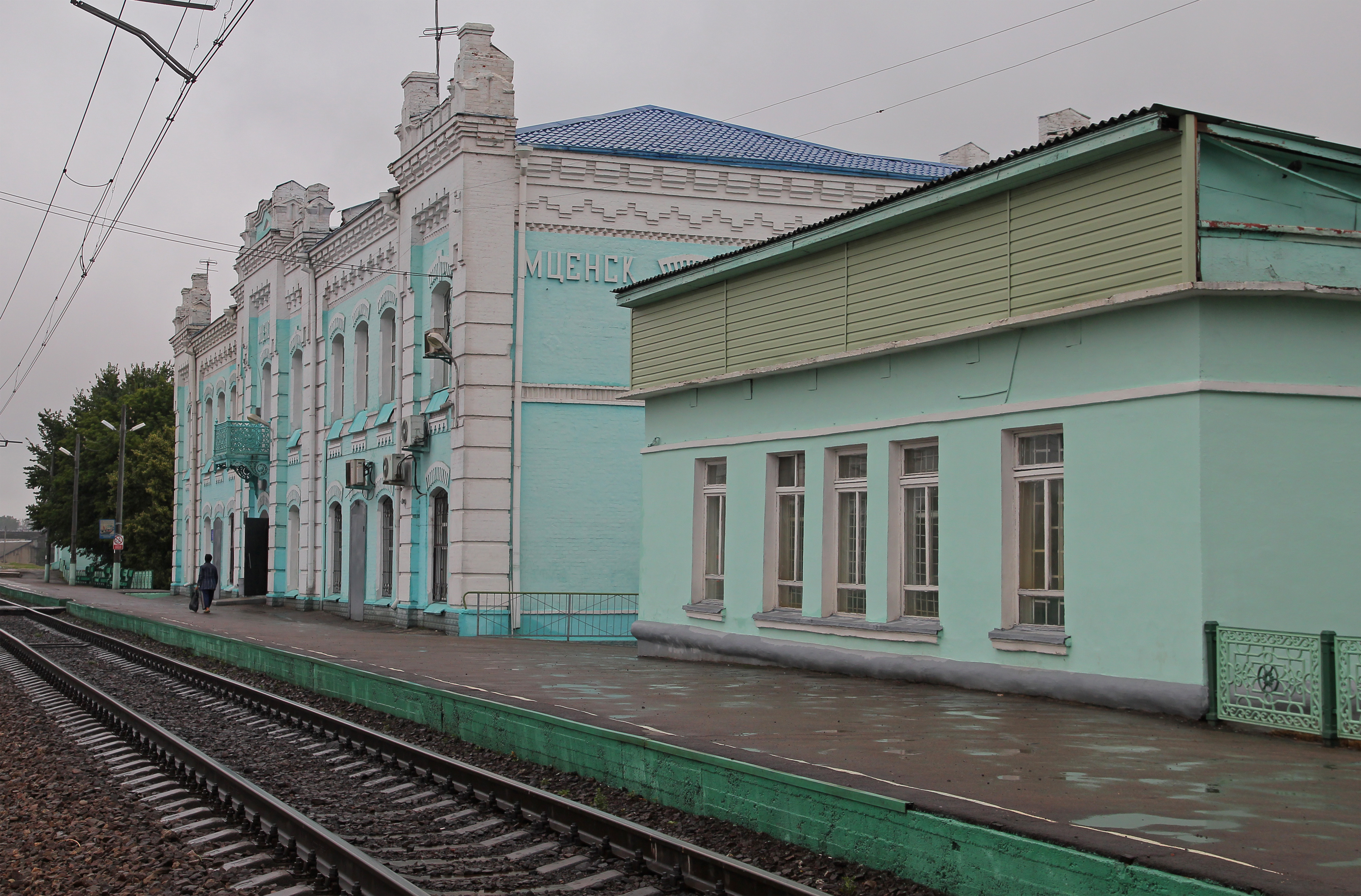|
Oryol (other)
Oryol ( rus, Орёл, , ɐˈrʲɵl, a=ru-Орёл.ogg, links=y, ), also transliterated as Orel or Oriol, is a city and the administrative center of Oryol Oblast, Russia, situated on the Oka River, approximately south-southwest of Moscow. It is part of the Central Federal District, as well as the Central Economic Region. History Early history While there are no historical records, archaeological evidence shows that a fortress settlement existed between the Oka River and Orlik Rivers as early as the 12th century, when the land was a part of the Principality of Chernigov. The name of the fortress is unknown; it may not have been called Oryol at the time. In the 13th century, the fortress became a part of the Zvenigorod district of the Karachev Principality. In the early 15th century, the territory was conquered by the Grand Duchy of Lithuania. The city was soon abandoned by its population after being sacked either by Lithuanians or the Golden Horde. The territory ... [...More Info...] [...Related Items...] OR: [Wikipedia] [Google] [Baidu] |
Oryol Oblast
Oryol Oblast (russian: Орло́вская о́бласть, ''Orlovskaya oblast''), also known as Orlovshchina (russian: Орловщина) is a federal subjects of Russia, federal subject of Russia (an oblast). Its administrative center is the types of inhabited localities in Russia, city of Oryol. Population: 714,094 (Estimate 2022) (Russian Census (2010), 2010 Census — 786,935). Geography It is located in the southwestern part of the Central Federal District, in the Central Russian Upland. In terms of area, at it is one of the smallest federal subjects. From north to south, it extends for more than , and from west to east—for over . Kaluga Oblast border it to the north-west; Tula Oblast is located to the north; Lipetsk Oblast — to the east; Kursk Oblast — to the south, and Bryansk Oblast is to the west. There are of black earth soils (chernozems) in the oblast, which amounts to three-quarters of the world chernozem reserves. Climate The climate is tempera ... [...More Info...] [...Related Items...] OR: [Wikipedia] [Google] [Baidu] |
Ivan The Terrible
Ivan IV Vasilyevich (russian: Ива́н Васи́льевич; 25 August 1530 – ), commonly known in English as Ivan the Terrible, was the grand prince of Moscow from 1533 to 1547 and the first Tsar of all Russia from 1547 to 1584. Ivan was the son of Vasili III, the Rurikid ruler of the Grand Duchy of Moscow. He was appointed grand prince after his father's death, when he was three years old. A group of reformers known as the "Chosen Council" united around the young Ivan, declaring him tsar (emperor) of all Rus' in 1547 at the age of 16 and establishing the Tsardom of Russia with Moscow as the predominant state. Ivan's reign was characterised by Russia's transformation from a medieval state to an empire under the tsar but at an immense cost to its people and its broader, long-term economy. During his youth, he conquered the khanates of Kazan and Astrakhan. After he had consolidated his power, Ivan rid himself of the advisers from the "Chosen Council" and triggered the ... [...More Info...] [...Related Items...] OR: [Wikipedia] [Google] [Baidu] |
Anton Denikin
Anton Ivanovich Denikin (russian: Анто́н Ива́нович Дени́кин, link= ; 16 December Old_Style_and_New_Style_dates">O.S._4_December.html" ;"title="Old_Style_and_New_Style_dates.html" ;"title="nowiki/>Old Style and New Style dates">O.S. 4 December">Old_Style_and_New_Style_dates.html" ;"title="nowiki/>Old Style and New Style dates">O.S. 4 December1872 – 7 August 1947) was a Russian Lieutenant General in the Imperial Russian Army (1916), who later served as the Deputy Supreme Ruler of Russia, Supreme Ruler of the Russian State during the Russian Civil War of 1917–1922. He was also a military leader of South Russia (as commander in chief). His slogan was “Russia - One and Indivisible”. Childhood Denikin was born on 16 December 1872, in the village of Szpetal Dolny, part of the city Włocławek in Warsaw Governorate of the Russian Empire (now Poland). His father, Ivan Efimovich Denikin, had been born a serf in the province of Saratov. Sent as a rec ... [...More Info...] [...Related Items...] OR: [Wikipedia] [Google] [Baidu] |
October Revolution
The October Revolution,. officially known as the Great October Socialist Revolution. in the Soviet Union, also known as the Bolshevik Revolution, was a revolution in Russia led by the Bolshevik Party of Vladimir Lenin that was a key moment in the larger Russian Revolution of 1917–1923. It was the second revolutionary change of government in Russia in 1917. It took place through an armed insurrection in Petrograd (now Saint Petersburg) on . It was the precipitating event of the Russian Civil War. The October Revolution followed and capitalized on the February Revolution earlier that year, which had overthrown the Tsarist autocracy, resulting in a liberal provisional government. The provisional government had taken power after being proclaimed by Grand Duke Michael, Tsar Nicholas II's younger brother, who declined to take power after the Tsar stepped down. During this time, urban workers began to organize into councils (soviets) wherein revolutionaries criticized the pro ... [...More Info...] [...Related Items...] OR: [Wikipedia] [Google] [Baidu] |
Voronezh Governorate
Voronezh Governorate (russian: Воронежская губерния, ''Voronezhskaya guberniya''; uk, Воронізька губернія) was an administrative division (a '' guberniya'') of the Tsardom of Russia, the Russian Empire, and the early Russian SFSR, which existed from 1708 (as ''Azov Governorate'') until 1779 and from 1796 until 1928. Its seat was located in Voronezh since 1725. The governorate was located in the south of the European part of the Russian Empire. In 1928, the governorate was abolished, and its area was included into newly established Central Black Earth Oblast. First Azov Governorate Azov Governorate, together with seven other governorates, was established on , 1708, by Tsar Peter the Great's edict.Указ о� ... [...More Info...] [...Related Items...] OR: [Wikipedia] [Google] [Baidu] |
Oryol Vice-Royalty
Oryol ( rus, Орёл, p=ɐˈrʲɵl, lit. ''eagle''), also transliterated as Orel or Oriol, is a city and the administrative center of Oryol Oblast situated on the Oka River, approximately south-southwest of Moscow. It is part of the Central Federal District, as well as the Central Economic Region. History Kievan Rus While there are no historical records, archaeological evidence shows that a fortress settlement existed between the Oka River and Orlik Rivers as early as the 12th century, when the land was a part of the Principality of Chernigov. The name of the fortress is unknown; it may not have been called Oryol at the time. In the 13th century, the fortress became a part of the Zvenigorod district of the Karachev Principality. In the early 15th century, the territory was conquered by the Grand Duchy of Lithuania. The city was soon abandoned by its population after being sacked either by Lithuanians or the Golden Horde. The territory became a part of the Tsardom of Rus ... [...More Info...] [...Related Items...] OR: [Wikipedia] [Google] [Baidu] |
Julian Calendar
The Julian calendar, proposed by Roman consul Julius Caesar in 46 BC, was a reform of the Roman calendar. It took effect on , by edict. It was designed with the aid of Greek mathematicians and astronomers such as Sosigenes of Alexandria. The calendar became the predominant calendar in the Roman Empire and subsequently most of the Western world for more than 1,600 years until 1582, when Pope Gregory XIII promulgated a minor modification to reduce the average length of the year from 365.25 days to 365.2425 days and thus corrected the Julian calendar's drift against the solar year. Worldwide adoption of this revised calendar, which became known as the Gregorian calendar, took place over the subsequent centuries, first in Catholic countries and subsequently in Protestant countries of the Western Christian world. The Julian calendar is still used in parts of the Eastern Orthodox Church and in parts of Oriental Orthodoxy as well as by the Berbers. The Julian calenda ... [...More Info...] [...Related Items...] OR: [Wikipedia] [Google] [Baidu] |
Belgorod Governorate
Belgorod ( rus, Белгород, p=ˈbʲeɫɡərət) is a types of inhabited localities in Russia, city and the administrative center of Belgorod Oblast, Russia, located on the Seversky Donets River north of the Russia–Ukraine border, border with Ukraine. Population: Demographics The population of Belgorod is 339,978 as of the most recent censuses: Geography Urban layout The oldest Belgorod fortress was built at the end of the 16th century on a chalk mountain. The discussion among historians about the time of the city’s founding, in 1593 or 1596, is not over and both versions have serious scientific basis. One of the first serious researchers of Belgorod history, Drenyakin, in the second half of the 19th century, adhered to the date of 1593, while reasonably exposing the attempts of some scientists already then to date the foundation of the city by Vladimir in the 10th century. Contemporary local historian Shmelev, trying to somehow open a three-year "black hole" fr ... [...More Info...] [...Related Items...] OR: [Wikipedia] [Google] [Baidu] |
Oryol Province
Oryol ( rus, Орёл, p=ɐˈrʲɵl, lit. ''eagle''), also transliterated as Orel or Oriol, is a Classification of inhabited localities in Russia, city and the administrative center of Oryol Oblast situated on the Oka River, approximately south-southwest of Moscow. It is part of the Central Federal District, as well as the Central Economic Region. History Kievan Rus While there are no historical records, archaeological evidence shows that a fortress settlement existed between the Oka River and Orlik Rivers as early as the 12th century, when the land was a part of the Principality of Chernigov. The name of the fortress is unknown; it may not have been called Oryol at the time. In the 13th century, the fortress became a part of the Zvenigorod district of the Karachev Principality. In the early 15th century, the territory was conquered by the Grand Duchy of Lithuania. The city was soon abandoned by its population after being sacked either by Lithuanians or the Golden Horde. T ... [...More Info...] [...Related Items...] OR: [Wikipedia] [Google] [Baidu] |
Kiev Governorate
Kiev Governorate, r=Kievskaya guberniya; uk, Київська губернія, Kyivska huberniia (, ) was an administrative division of the Russian Empire from 1796 to 1919 and the Ukrainian Soviet Socialist Republic from 1919 to 1925. It was formed as a governorate in the Right-bank Ukraine region after a division of the Kiev Viceroyalty into the Kiev and the Little Russia Governorates, with its administrative centre in Kiev. By the early 20th century, it consisted of 12 uyezds, 12 cities, 111 miasteczkos and 7344 other settlements. After the October Revolution, it became part of the administrative division of the Ukrainian SSR. In 1923 it was divided into several okrugs and on 6 June 1925 it was abolished by the Soviet administrative reforms. History The Kiev Governorate on the right bank of Dnieper was officially established by Emperor Paul I's edict of November 30, 1796. However it was not until 1800 when there was appointed the first governor and the territory was gover ... [...More Info...] [...Related Items...] OR: [Wikipedia] [Google] [Baidu] |
Mtsensk
Mtsensk (russian: Мценск) is a town in Oryol Oblast, Russia, located on the Zusha River (a tributary of the Oka) northeast of Oryol, the administrative center of the oblast. Population: 28,000 (1970). History It was first mentioned in the Nikon Chronicle in 1146 as a part of the Principality of Chernigov. The name comes from the Mtsena River, a tributary of the Zusha, beside which the fortress stood. In 1238, Mtsensk was destroyed by Batu Khan. Since 1320, it was under the rule of Lithuania, eventually becoming a part of the Muscovy in 1505. Since the beginning of the 19th century, Mtsensk was rapidly developing as an industrial town. During Operation Barbarossa, German armoured forces captured the town in the fall of 1941. In particular, troops of the 3rd Panzer Division, 4th Panzer Division, and Infantry Regiment Großdeutschland saw combat in the immediate vicinity. During the Battle of Kursk in 1943, Mtsensk served as the primary war zone. On 20 July 1943, Mtse ... [...More Info...] [...Related Items...] OR: [Wikipedia] [Google] [Baidu] |


.png)



_(cropped).jpg)

_(1846).gif)
